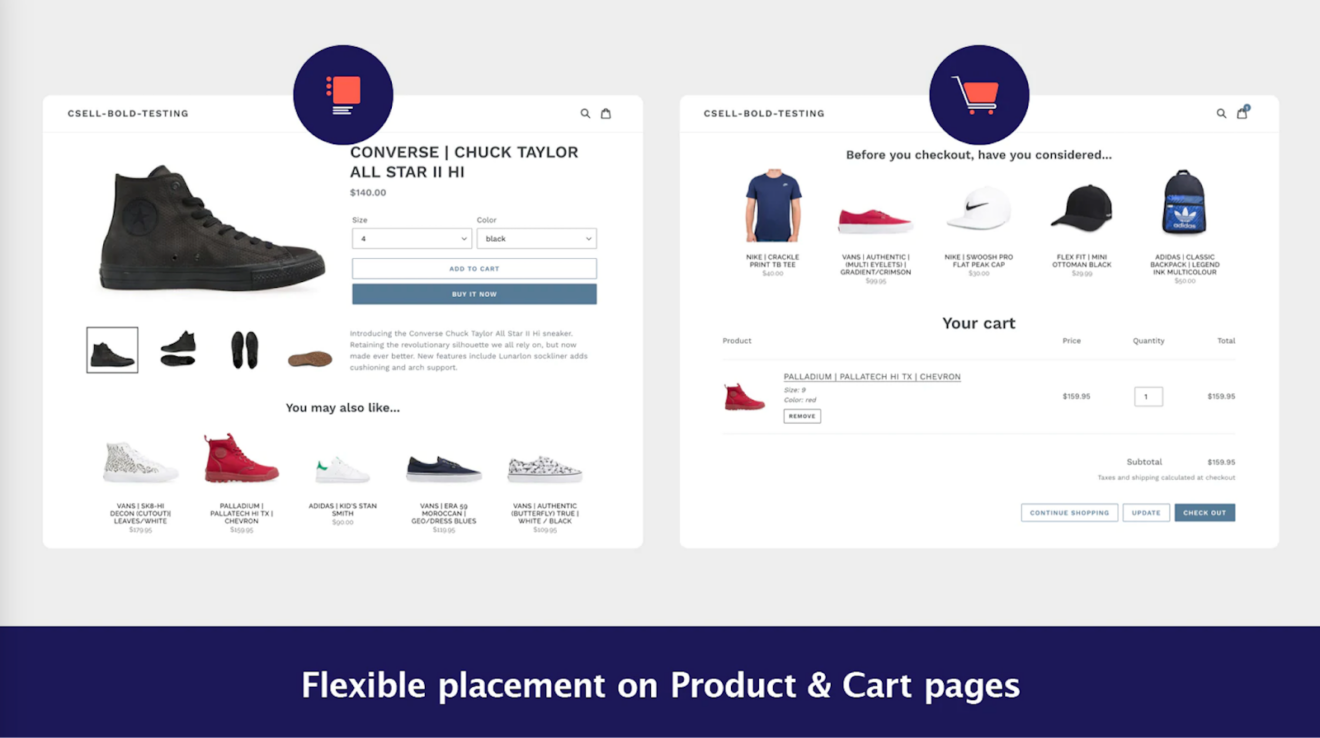
How do I scale my Shopify store?

So, you’ve spent a lot of time and energy creating your Shopify store, and now you’re ready to scale it. Shopify is perfect for businesses starting in e-commerce and, when you’re ready to grow, they also have plenty of solutions to support you on your way.
Here are a few tips to help you get your store growing:
Improve the usability & design of your website
Your website design is a super important aspect of your Shopify store! Your store can’t just look good – it needs to be easy to use and navigate. When it comes to increasing sales, there are a bunch of design tricks you can use to increase conversions.
An easy place to start is the checkout. While the standard Shopify checkout design is fine, there are several apps you can install to improve upon it. Checkout Bear is perfect for Shopify plus users looking to skyrocket their conversions. It allows you to add stock countdowns to increase a sense of urgency.

Countdowns are particularly useful when you have buyers with a spontaneous mindset. People like this tend to be compelled by a perceived scarcity and urgency at checkout.
Prepare your store for scale
You need to be sure your store can handle volume before it gets to tens of thousands of concurrent users. Prepare your store for scale, and you can address issues that many e-commerce sites experience during rapid growth before they occur. Nobody wants their site to go down when it’s at its busiest!
One of the easiest ways to prepare your site for growth is to look at your hosting. Shopify’s hosting is more than up to the task of remaining stable no matter the number of users on it, and that’s the huge advantage of working with them.
If you’re not hosting with Shopify, you’ll need to make sure that any host you use remains stable no matter the traffic spikes your site experiences and that there won’t be a loss of function or speed if users on the site increase.
Next up, prepare your staff for scaling up. Shopify can automate various processes, but your team will still need to be prepared to handle the increased demand for customer support. Excellent customer support can actually drive repeat purchases, so it’s important to get this right.
Finally, consider your footprint. Your store will consume more energy as more and more users purchase from it. When this happens, carbon-neutral solutions are your friend! At AirVu Media, we help our partners reduce and offset their emissions, no matter their host.
Scale your SEO
Sure, you’ve probably got all your headings in the right place; your products have great titles and fully optimised descriptions; hey, maybe you even have a perfect sitemap.xml file installed with YOAST. So what else is there when it comes to search engine optimisation?
It’s time to start correctly targeting keywords based on the search terms and their intent (for example, you want to target commercial intent more than informational). Then, create a strategy for what products and content you will improve for which search terms, identify your weak areas and the areas your competitors have nailed, and go forth.
Any good SEO strategy includes a link-building plan as well. Combine this with a monthly SEO audit of products and pages to scale your SEO to great heights.
Nurture customers with email marketing
Email marketing is the backbone of any e-commerce business. If you haven’t already, start building an email list right away. You should be collecting emails during checkout (and permission to market to users) at the very least.
Once you’ve got some names on your list, it’s time to send out emails! Some quick wins for email marketing (that you can start today) are:
1. Automated Welcome Emails: An automated welcome email is a great way to start nurturing customers when they sign up for a newsletter. This email should include details about your store, the products you offer, and any discounts they may be eligible for.
2. Leverage Segmentation: Segmentation is a great way to ensure you send the right message to the right customer. Set up lists to target customers based on past purchases, demographics, and more.
3. Offer Discounts and Promotions: Everyone loves a great deal. You can send highly targeted discounts through email that appeal to what users last looked at on your site.
4. Use Abandoned Cart Emails: Many customers add items to their cart but never complete the purchase. Use abandoned cart emails to remind customers of their items and offer discounts or other incentives to complete the purchase. As a result, you could see a 40% increase in conversions (yes, it’s that important!)
6. Ask for Feedback: Ask for feedback from your customers to learn more about their experience with your store. This helps you make improvements to your store and product offerings.
Upsell, upsell, cross-sell
There’s a reason the chocolate is next to the cashier in the grocery store. We’re creatures of whims when we’re at the checkout. You can take advantage of this online too!
Add related items in Shopify and display them on your product page to ensure you maximise cross-selling opportunities. You’ll need to use something like the Cart Upsell & Cross-Sell app to implement this.

Consider industry-specific cross-sells you can offer to increase conversions—for example, a ‘wear with’ module on product pages for clothing.
Think you’re all done? Think again! Offering users the opportunity to upgrade their product with add-ons in the checkout process is also a great way to increase revenue.
What’s next?
With the right strategy, design, and resources in place, you can easily ensure your store is ready to handle an influx of customers. The key is to understand and treat your store as a living organism that needs to change to fit your goals, changing customer base, and the changing landscape online.
If you’re ready to take your business to the next level, our team of commerce experts is here to help. Book a free consultation with us and get started on your journey to success.
